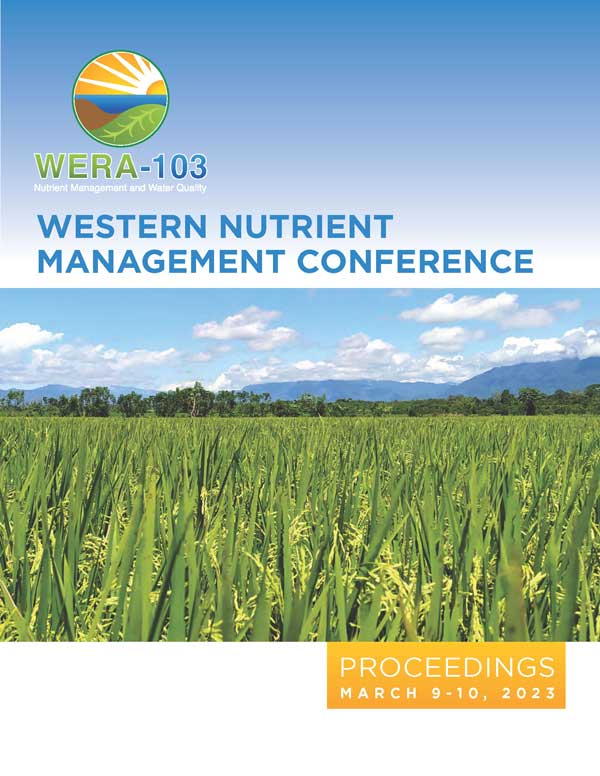Download the Conference Proceedings
Get your copy of the 2023 Western Nutrient Management Conference Proceedings today! Download the PDF file and view all of the available proceedings.
Proceedings
Authors
| Filter results1 paper(s) found. |
|---|
1. Urea and Ammonia Volatilization in Dryland Grass Seed Systems1The purpose of this study was to evaluate the influence of grass seed production conditions and management practices on NH3 volatilization, Kentucky bluegrass seed yields and N recovery from urea. Laboratory incubations suggest the potential for NH3 volatilization is greater from stands in which post-harvest residue is baled and removed than from stands in which residue is burned. Both burned and unburned stands have a surface pH > 7.9, although pH declined with time in the burned... R. Koenig, C. Proctor, W. Johnston, C. Golob |
